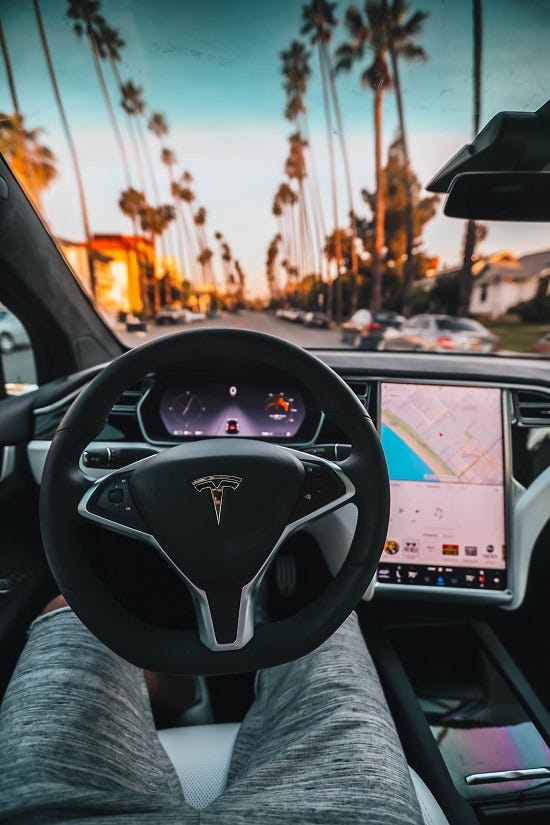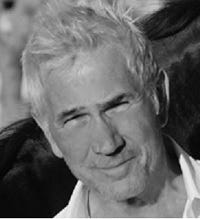Promise of Autonomous Self-Driving Cars Seen As A Long Way Off
Many self-driving car efforts have backed off promises about Level 5 autonomy, as they pursue automated assistance systems aimed at helping drivers
By John P. Desmond, Editor, AI in Business

Tech leaders working on fully autonomous self-driving cars set the expectation that the promise would be delivered on by now. Instead, Tesla gadfly Dan O’Dowd ran an ad in some markets during the Super Bowl last weekend, arguing that Tesla’s Full Self Driving mode should be banned by government regulators.
This week, the National Highway Traffic Safety Administration (NHTSA) posted a letter it sent to Tesla that said the company acknowledged it has issued a “safety recall” of its Full Self-Driving (FSD) software, which is in a beta test stage. The NHTSA letter states the FSD software “may allow the vehicle to act unsafe around intersections, such as traveling straight through an intersection while in a turn-only lane,” among the issues cited. The letter said the potential number of cars with FSD software was 362,758. Tesla has sold an estimated 3.6 million electric vehicles worldwide. The letter states that Tesla plans to remedy the issue with an over-the-air software update, which will not require that affected Tesla owners actually drive their vehicle to a service center.
That’s a long way to come down. What happened?
“Things have changed,” stated Jim Farley, CEO of Ford, of the company’s plans as of 2017 to broadly deploy self-driving cars in 2021, in a recent account in CNN Business. Late last year, Ford and its partner Volkswagen pulled the plug on their self-driving joint venture called Argo AI. The executives said they would focus on partially automated driver-assist systems, which need to be monitored by humans.
Ford took a $2.7 billion accounting charge and said with Volkswagen it would hire many of Argo’s 2,000 employees.
McKinsey has estimated that more than $10 billion has been invested in self-driving cars since 2010, according to the CNN account.
Other players also set aggressive targets for self-driving vehicles: General Motors in 2017 promised mass production of fully autonomous vehicles in 2019; and Lyft announced in 2017 that half its rides would be self-driving by 2021.
Google’s Waymo effort, started in 2009, today is operating ride-hailing services within specified metropolitan areas, including downtown Phoenix and San Francisco. The Waymo Driver is said to operate at Level 4 autonomy, meaning no human driver is needed in “defined operational conditions.”
Tesla stands alone today in making aggressive predictions for self-driving cars. Tesla CEO Elon Musk has said every year since 2017 that the software capable of full self-driving will arrive in the “next year,” according to the CNN account.
Anti-Tesla Super Bowl Ad Ran in Regional Markets
Tesla’s Full Self-Driving (FSD) software got attention from Super Bowl watchers in selected markets, by virtue of a 30-second ad from entrepreneur Dan O’Dowd challenging the National Highway Traffic Safety Administration to ban FSD for safety reasons. The FSD software is currently in a beta test mode, available to certain Tesla users for $15,000.
The 30-second ad showed a Tesla said to be in FSD mode slamming into a dummy of a child in a crosswalk and blowing by a yellow school bus with its stop sign extended among its scenes. O’Dowd is the CEO of Green Hill Software, a company that builds software for embedded systems, including automated driving systems. Last year, as part of the anti-Tesla effort called the Dawn Project, O’Dowd took out a full-page ad in The New York Times challenging FSD. More ads are planned, including TV ads in the Washington, D.C. region, “where regulators are located,” according to an account in TechCrunch.
Senators Richard Blumenthal (D-Conn.) and Edward J. Markey (D-Mass.) have called for more oversight on Tesla’s tech, but it’s not a mainstream issue in Congress. Tesla has called on O’Dowd to cease and desist his campaign, saying it misrepresents the technology and ignores testing results from independent agencies.
O’Dowd released a statement in response saying in part, “Tesla continues to focus on features and marketing gimmicks, not fixing critical safety defects … It is clear that the priorities at Tesla are wrong; and it is time for the regulator to step in and switch the software off until all the issues we have identified are fixed.”
Self-Driving Expert Lance Eliot See Tesla as Boxed In On Level 5
Asked to comment on the safety of Tesla’s self-driving software, AI expert and Forbes columnist Dr. Lance Eliot stated to AI in Business that he likes to distinguish the three levels of Tesla’s self-driving software: Autopilot, Enhanced Autopilot and Full Self-Driving (FSD). He lamented the naming Tesla has assigned to its self-driving software versions, saying “The naming of the Tesla semi-autonomous functionality is sorely misleading and lures and lulls drivers into believing that the vehicle is an autonomous vehicle that can self-drive. It cannot at this time and is unlikely to do so any time soon.”
He noted some “wink wink” duplicity in Tesla’s own description of its self-driving software, which states, “Autopilot, Enhanced Autopilot, and Full Self-Driving Capability are intended for use with a fully attentive driver, who has their hands on the wheel and is prepared to take over at any moment. While these features are designed to become more capable over time, the currently enabled features do not make the vehicle autonomous.” (https://www.tesla.com/support/autopilot).
About this, Eliot states, “In this manner, they are getting the dour best of both worlds, in the sense that they are using misleading naming that appeals to people wanting to get truly self-driving cars, and yet at the same time are seeking to distance themselves from any liability for those drivers that get into trouble by failing to remain attentive at all times.”
He called the NHTSA’s investigations into instances of Tesla car crashes “vitally important,” noting, “We expect that our government agencies ought to be looking out for public safety and be closely examining how these cars perform concerning their underlying design and manufacturing (i.e., with and also without the suite of automated driving features enabled).”
Self-driving car experts are backing away from aggressive predictions of when the vaunted Level 5 of fully autonomous self-driving capability will be achieved. Level 2, when the car can take control of acceleration, braking and steering at the same time, is predicted to come sooner.
A report prepared by Accenture quoted in a recent issue of Forbes states, “We expect that, by 2030, 60 percent of all new cars will be equipped with Level 2 features …we expect that even the share of premium cars with Level 3 or 4 will only account for about 5 percent of the total market by 2030. Mission impossible: Level 5.”
Pedro Pacheco, senior research director at Gartner, had a similar but not as dark sentiment. “We won’t see L5 before 2030,” he stated.
Is the Pursuit of Level 5 Worth It?
One has to ask whether Level 5 of self-driving cars is worth pursuing, or whether all the automated assistance that can get close to that point is good enough.
Weighing in on this for AI in Business, Eliot said, “I've been asked that question before, namely whether Tesla and Elon Musk could toss in the towel on the quest for true self-driving.”
“My answer is that they have painted themselves into an extremely tight corner, from which extraction is nearly impossible. They have made ongoing and explicit promises that the buyers of their cars and the subscribers of their Autopilot, Autopilot Enhanced, and Full Self-Driving are going to end up with true self-driving. If an attempt was made to back down from this pledge, the lawsuits by buyers on a class-action basis would undoubtedly be filed and likely prevail. The cost would be enormous to Tesla and at least bankruptcy if not a complete collapse of the firm would almost certainly result.”
“In addition, the chances are that federal and state criminal charges would be filed for having made said unkept promises. In a sense, the words and actions of Tesla and Musk have led them down a one-way street. No backing up is conceivable. They have to keep the journey going, like juggling plates and a chainsaw, and hope that they can string along until the day that true self-driving is attained, which some believe is not going to happen and at some point the piper will need to be paid.”
He sees the course Tesla has set for itself to be irreversible.
“Live by the sword, perish by the sword,” Dr. Eliot says of Tesla.
Read the source articles and information in CNN Business, TechCrunch Forbes. Read Lance Eliot’s columns on AI in Forbes at: https://www.forbes.com/sites/lanceeliot/
(Write to the editor here.)




